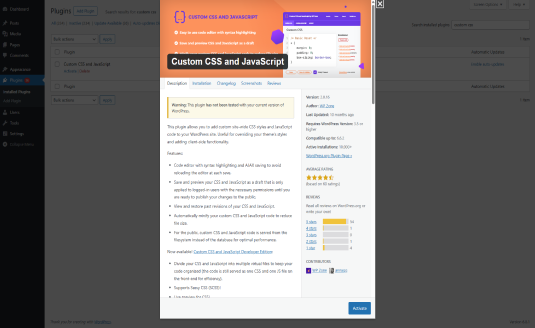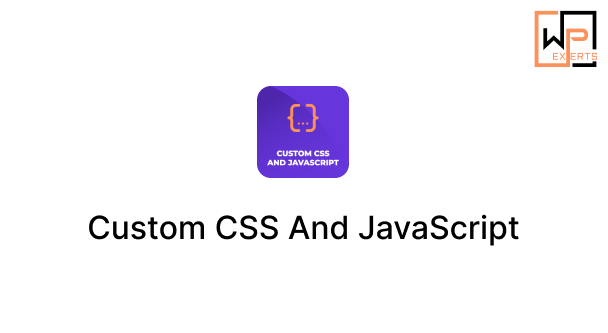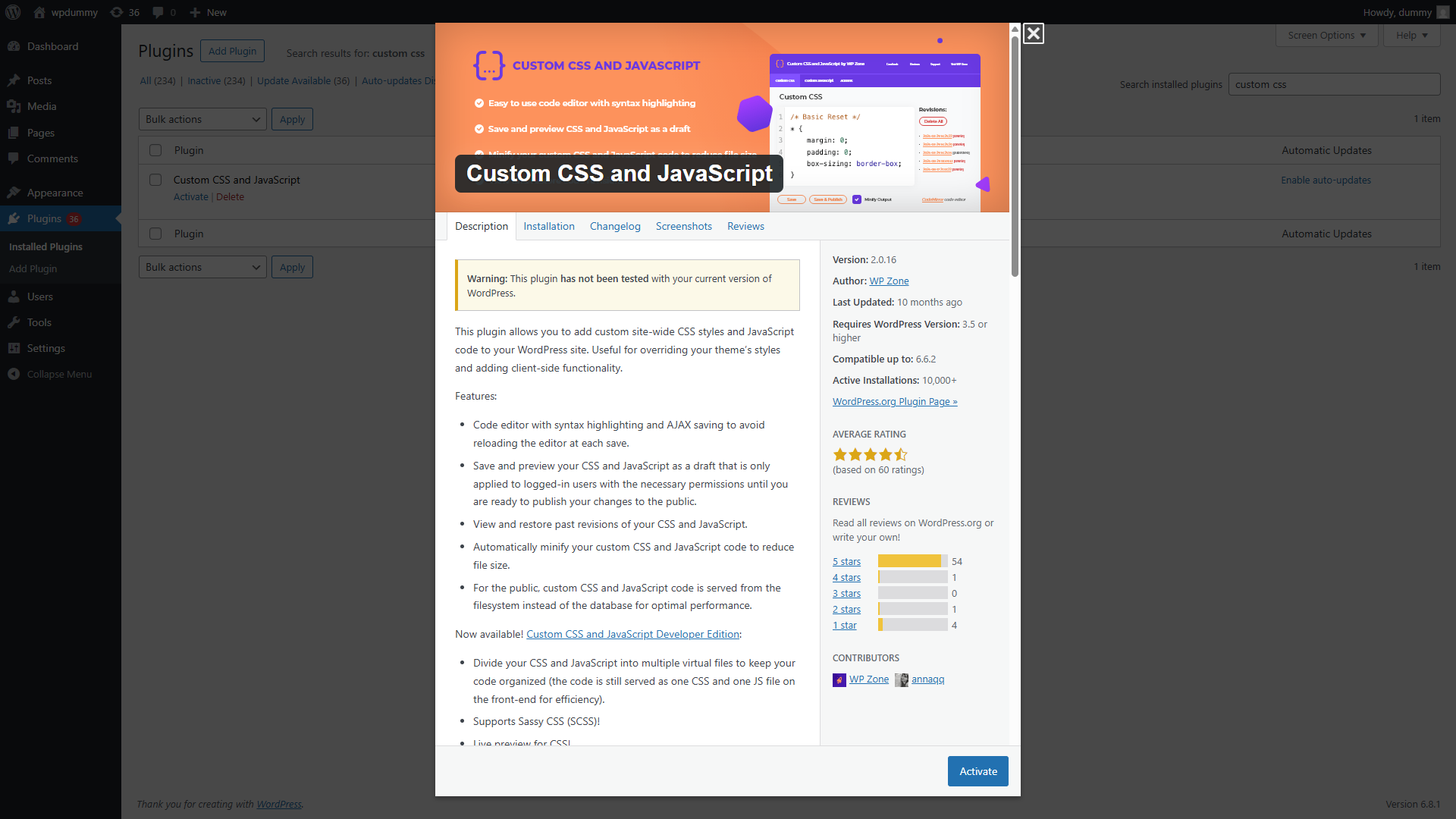Introduction
WordPress is a flexible and powerful content management system (CMS), but sometimes users need more customization than what themes or plugins offer out of the box. That’s where custom code comes in—particularly Custom CSS and JavaScript. This plugin allows you to safely add your own CSS styles and JavaScript code to customize your website’s appearance and functionality—without directly modifying theme or plugin files.
Custom CSS and JavaScript plugins are especially valuable because they allow site owners, designers, and developers to make modifications while keeping WordPress core files, themes, and plugins update-safe. One of the most popular and user-friendly plugins in this category is simply called “Custom CSS & JS” by SilkyPress.
This article will walk you through what this plugin does, how it works, key features, use cases, pros and cons, and how it can improve your WordPress workflow.

What is the Custom CSS & JavaScript Plugin?
Custom CSS & JS is a lightweight and powerful plugin that lets you add custom CSS, JavaScript, and HTML code to your WordPress site. The plugin provides a secure and organized way to insert code into your website’s frontend or backend—without modifying your theme files or needing a child theme.
Whether you’re a beginner adding a few style tweaks or a developer integrating scripts for functionality, this plugin provides a code editor interface where you can write and manage your custom code directly from the WordPress dashboard.
It supports:
- External files
- In-line styles/scripts
- Code prioritization (header or footer)
- Conditional loading
- Syntax highlighting
Key Features
Here are the most important and useful features of the Custom CSS & JS plugin:
🔧 1. Add Custom CSS Easily
- Write your own CSS rules using a dedicated editor.
- Customize fonts, layouts, colors, or animations.
- Apply styles site-wide or on specific pages.
For example:
cssCopyEditbody {
background-color: #f4f4f4;
}
h1 {
color: #0073aa;
}
You don’t need a child theme or theme editor access—just paste your code, save it, and you’re done.
🔌 2. Add Custom JavaScript
- Insert JavaScript or jQuery code to enhance functionality.
- Load scripts in the header or footer for optimal performance.
- Option to disable on specific pages.
Example:
javascriptCopyEditdocument.addEventListener("DOMContentLoaded", function() {
alert("Welcome to my WordPress site!");
});
Use it for sliders, animations, or other custom interactions.
💻 3. Syntax Highlighting with CodeMirror
The plugin uses CodeMirror, a syntax-highlighting text editor, for better code writing. It supports:
- Color-coded syntax
- Line numbering
- Auto-indentation
- Bracket matching
This enhances the experience for developers and reduces errors.
🧠 4. Conditional Loading
You can choose where your code will run:
- On the entire site
- Only on specific pages
- Only in the admin panel
- Only on the homepage
This improves performance and ensures the script or CSS loads only where needed.
⚙️ 5. Load Code in Header or Footer
- For CSS, code is added to the
<head>section. - For JS, you can choose between
<head>or before</body>. - Footer loading is ideal for faster page loads.
🔐 6. Secure and Update-Proof
Your custom code is saved in the database and not in theme files. This means:
- Your code stays intact during theme or plugin updates.
- No need to worry about overwriting changes.
- Secure way to manage front-end behavior.
📦 7. Export and Import Code
For large sites or development workflows, you can:
- Export your code for backup or reuse.
- Import previously saved CSS/JS files into a new site.
- Manage multiple environments (e.g., staging and live).
📂 8. Organize Multiple Code Snippets
- Create multiple CSS/JS entries with custom titles.
- Enable/disable them independently.
- Add notes for each snippet.
This is extremely useful for large or growing websites with different customization needs.
🎯 9. Works with Any Theme or Page Builder
The plugin is compatible with:
- Gutenberg
- Elementor
- Divi
- WPBakery
- Astra, OceanWP, Hello Theme, etc.
You can customize or extend styles created by any theme or page builder.
Use Cases
🔹 1. Styling Adjustments
You can use Custom CSS to:
- Change button styles
- Override theme font sizes
- Adjust margins/padding
- Hide unwanted elements
- Customize WooCommerce product pages
🔹 2. Interactive Behavior
With JavaScript, you can:
- Add confirmation popups
- Build sliders or carousels
- Add dynamic forms
- Validate inputs
- Track user actions
🔹 3. A/B Testing or Tracking
You can embed third-party JS scripts like:
- Google Analytics
- Hotjar
- Facebook Pixel
- Custom tracking events
🔹 4. Client Sites
For agencies and freelancers, it’s perfect for:
- Creating site-specific tweaks
- Avoiding child theme development for small edits
- Allowing clients to see/edit CSS/JS visually
🔹 5. Debugging & Testing
The plugin is also helpful for temporary debugging or testing snippets without editing theme files or using FTP.
Performance Considerations
The plugin is lightweight and modular, meaning it won’t affect your site’s speed if used properly.
Best practices for performance:
- Place JavaScript in the footer unless necessary in the header.
- Minify code (though not mandatory—plugin doesn’t auto-minify).
- Use conditional loading for large scripts.
Free vs Pro Version
The free version of the plugin (available on WordPress.org) is sufficient for most basic to intermediate use cases. However, there’s a Pro version that includes advanced features.
🔓 Pro Features May Include:
- SCSS/LESS support
- JavaScript minification
- Custom code libraries
- Version control for code snippets
- Role-based access to code editors
- Shortcode-based injection
- External file linking
- Automatic backups
Note: Feature set may vary depending on the specific plugin variant used. Some third-party developers have similar-named plugins.
Installation and Setup
Steps to install the plugin:
- Go to Plugins → Add New in your WP dashboard.
- Search for Custom CSS & JS.
- Click Install Now and then Activate.
- A new menu item called Custom CSS & JS will appear in your admin panel.
- Click Add Custom CSS or Add Custom JS.
- Write your code, choose placement options (site-wide or specific), and click Publish.
Your code is now active across your WordPress site!
Security Notes
When adding JavaScript, always validate and test your code. Improper JS can:
- Break site layout or functionality
- Conflict with other scripts
- Introduce vulnerabilities (e.g., XSS if data is not sanitized)
Always test your code in staging first if possible.
Pros and Cons
✅ Pros
- Easy to use and beginner-friendly
- No need for FTP or file editing
- Keeps your code safe during theme updates
- Supports CSS, JS, and even HTML in some cases
- Great for debugging, minor tweaks, and advanced logic
❌ Cons
- Poorly written JS/CSS can cause conflicts
- No auto-minification in the free version
- May be misused if users add excessive code without optimization
Conclusion
The Custom CSS and JavaScript plugin is an essential tool for anyone looking to make safe, update-proof changes to their WordPress site. From simple style tweaks to full-featured JavaScript interactions, it offers a powerful, flexible, and user-friendly interface for customizing your site without diving into the theme or child theme files.
Whether you’re a beginner making small adjustments or a developer managing multiple custom scripts, this plugin makes your job easier, safer, and more organized. It’s a must-have addition to your WordPress toolkit.





